MAKSYUTOV, S., NAKATSUKA Y., VALSALA V., SAITO M., KADYGROV N., AOKI T., EGUCHI N., HIRATA R., IKEDA M., INOUE G., NAKAZAWA T., ONISHI R., PATRA P.K., RICHARDSON A.D., SAEKI T., YOKOTA T.
CGER Reports
CGER’S SUPERCOMPUTER MONOGRAPH REPORT Vol.15
The Greenhouse gases Observing SATellite (GOSAT) was placed in orbit in January 2009 to ascertain the global distribution of the two major greenhouse gases, carbon dioxide (CO2) and methane, and to understand how the sources and sinks (fluxes) of these gases vary with seasons, years, and geographical locations. To this end, an inverse modeling system that estimates CO2 regional fluxes from the GOSAT observations is being developed and tested using the supercomputing facility at NIES.
This volume of the CGER's Supercomputer Monograph Report describes the main components of the inverse modeling system. The system consists of tracer transport models for the atmosphere (Figure 1) and ocean, process models of the carbon cycle in the terrestrial biosphere (Figure 2) and ocean, and inventories of anthropogenic and natural fluxes (Figure 3). Also included in this volume, other than the descriptions of the components, is a report which shows the degree of contribution that the GOSAT data would make in improving the accuracy of surface CO2 fluxes estimated monthly on a sub-continental scale (Figure 4).
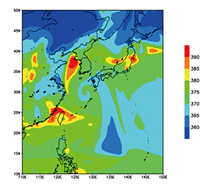
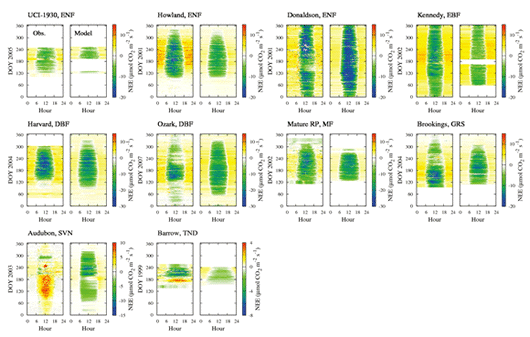
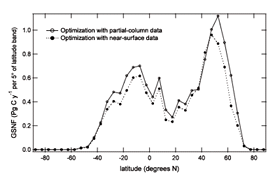
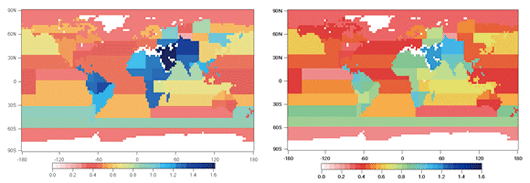


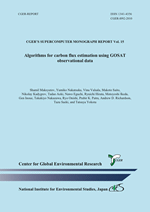 PDF, 2.2 MB
PDF, 2.2 MB